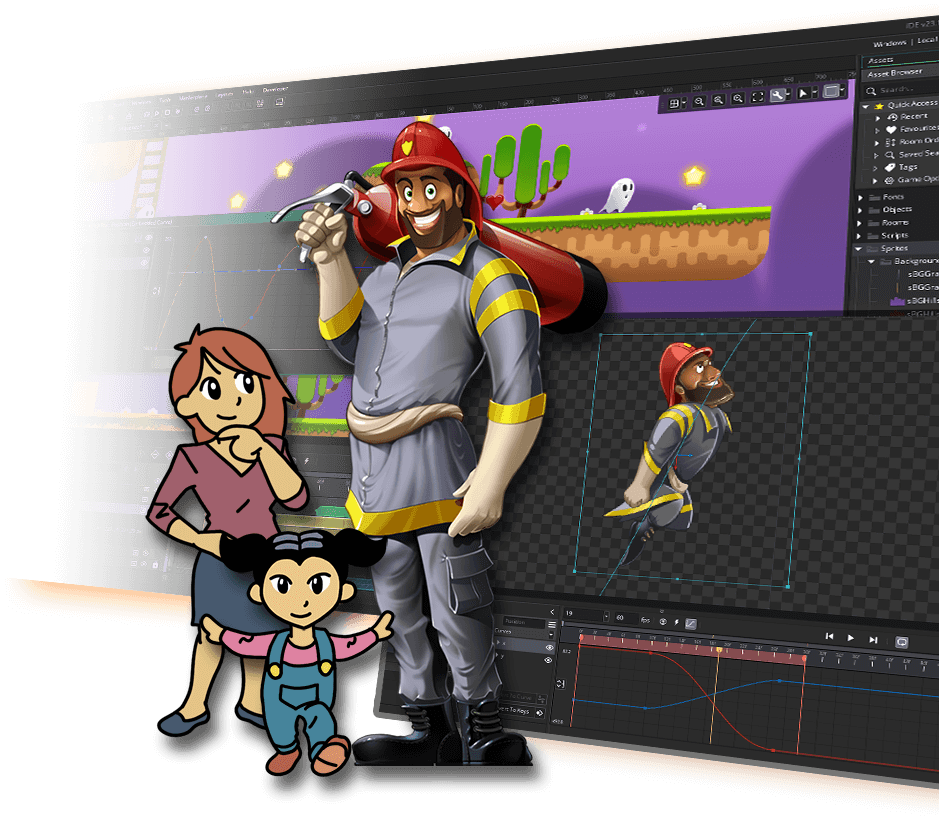GameMaker Studio is a popular tool for game developers, and this article outlines a step-by-step process for building a game with the software. The first step is choosing a game concept, followed by planning the game thoroughly, setting up GameMaker Studio, creating game assets, coding game mechanics, adding audio and visual effects, playtesting and debugging, and finally publishing the game. The article emphasizes the importance of planning and playtesting in the game development process and offers GameMaker Studio as a powerful tool for aspiring game developers.
From Scratch to Game: Building Games with GameMaker Studio
Game development is a challenging yet rewarding process that requires a lot of time, effort, and creativity. Whether you’re an aspiring game developer or an experienced one, the right tools can make all the difference. One such tool that has gained popularity among game developers is GameMaker Studio. In this article, we’ll take you through the step-by-step process of building a game with GameMaker Studio, from scratch to a fully functional game.
Step 1: Choosing a Game Concept
The first and most crucial step in the game development process is choosing a game concept. It could be anything from a puzzle game or a platformer to an RPG or a first-person shooter. Once you have selected your game concept, you can start thinking about the game mechanics and how the player will interact with your game.
Step 2: Planning the Game
Before you jump into coding, it’s essential to plan your game thoroughly. This involves creating a game design document that outlines the game’s concept, gameplay mechanics, level design, and story (if applicable). You should also create a development timeline and budget to ensure that you stay on track during the game development process.
Step 3: Setting Up GameMaker Studio
Once you have a clear plan for your game, it’s time to set up GameMaker Studio. You can download the software from the official website and install it on your computer. Once installed, open the software and create a new project. You’ll be prompted to choose a platform (Windows, macOS, iOS, Android, or HTML), and you’ll also need to give your game a name.
Step 4: Creating Game Assets
The next step is to create game assets such as characters, backgrounds, and animations. You can design these assets using software like Adobe Photoshop or Illustrator. Once you have created your assets, you can import them into GameMaker Studio.
Step 5: Coding Game Mechanics
With your game assets in place, it’s time to start coding the game mechanics. GameMaker Studio uses a drag-and-drop interface, making it easier for those with little to no coding experience to create games. You can also use GML (GameMaker Language) to create more complex game mechanics. GML is similar to other programming languages, so if you have experience in programming, you’ll find it easy to use.
Step 6: Adding Audio and Visual Effects
Once you have the core mechanics of your game in place, it’s time to add audio and visual effects. You can use GameMaker Studio to add sound effects and music to your game. You can also create visual effects, such as particle effects or animations, to enhance the gameplay experience.
Step 7: Playtesting and Debugging
With your game almost complete, it’s time to playtest it thoroughly to identify any bugs or issues. You can use GameMaker Studio’s built-in debug mode to track down and fix any bugs.
Step 8: Publishing Your Game
Once you have playtested and debugged your game, it’s ready to be published. With GameMaker Studio, you can publish your game to multiple platforms, including Windows, macOS, iOS, Android, and HTML5. You can also publish your game on various gaming marketplaces, such as Steam and the App Store.
Conclusion
Game development is a complex and challenging process, but with the right tools, it can be an incredibly rewarding experience. GameMaker Studio is an excellent tool for aspiring game developers, and this walkthrough has shown you how to build a game from scratch using GameMaker Studio. Remember, planning and playtesting are essential to creating a successful game, and with GameMaker Studio, you have the tools to create something truly remarkable.
